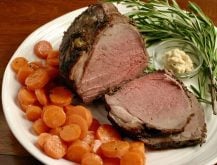CLARESHOLM, Alta. – Jackie Chalmers wants to promote farming as an honourable profession.
Five years ago, she and her lawyer husband, Pat Lannan, bought the historic New Oxley Ranche near Claresholm, Alta. She had spent most of her life at Millarville working in advertising, art and the community. Moving to the ranch drew her back to her farming roots where she searched for an agricultural project she could manage on her own.
She wanted a crop that would grow in soil that had never been cultivated, could thrive in the dry, high altitude and would not be ravaged by deer.
Read Also

Know what costs are involved in keeping crops in the bin
When you’re looking at full bins and rising calf prices, the human reflex is to hold on and hope for more. That’s not a plan. It’s a bet. Storage has a price tag.
Garlic turned out to be the answer.
“(Pat) told me when I first wanted to do this, he said, ‘you go ahead and do whatever you want. I’m not helping you.’ Last year, my son and him helped me help plant.”
Garlic is planted in the fall so her first crop of 7,000 plants went into the ground in September 2009.
Farm labour is a precious commodity with her son working full-time off the farm and planning to go to college and her daughter, Jennie, raising her daughter.
In the future, Chalmers is hoping to become more mechanized on her 375 acre spread.
The original Oxley Ranche started in a boardroom of investors in England in March 1882, but ended up going bankrupt. Chalmer’s farm is the site of the original Oxley, where there was a local post office from 1905-16.
At one time, the ranch included 200,000 acres under lease at a penny per acre per year, with 3,000 cattle and 300 horses.
Chalmer’s garlic is grown in an old roping arena. She does not use chemicals and plans to make some agronomy changes to capture water and find creative ways to fight weeds and gophers.
Now on the third crop, she is planning to increase production after getting her product into 23 Calgary Co-op grocery stores. She got help from friends, Tony and Karen Legault of Nanton, Alta., who have been selling their vine-ripened tomatoes to the chain for 11 years.
The Co-op features posters of Chalmers with a bunch of garlic.
The Legaults also sell some of her garlic from their farm store.
“You have to be a believer in the product. We have sold Jackie’s garlic in our little farm store and I have not had a bad comment about that garlic,” Tony said.
“If you’ve got a good product, the product usually stands by itself.”
Local taste and the small farmer story is what Chalmers is marketing. She joined the slow food movement and recently helped form the Slow Food Southern Alberta convivium.
That connection sent her to Terra Madre in Italy last year, an international slow food conference, where she met 6,000 other farmers working to develop sustainable agriculture, grow wholesome food and make a decent income.
“It was life altering. It is like the United Nations of food,” Chalmers said.
“Philosophically, I think it is so important we support the producers first and foremost with what we are doing with slow food.
“I don’t want people to think food grown this way is elitist.”
For two years, her family hosted a southern Alberta block party called Spirit of the Hills, where more than 500 people showed up to eat locally grown food and enjoy Alberta art.
“People were thrilled to be able to come here because there is so much history here. It is the heart of a lot of things that happened in this area.”
Her slow food chapter is producing a booklet on local producers and the regional history that will be distributed in tourist booths, museums and other public places.
“If the producers, big and small, are ever going to be recognized and be appreciated, we have got to get it out there,” Chalmers said. “We have to get the word out that what we do is an honourable profession. We deserve to be compensated fairly.”
GARLIC: EFFECTIVE PROTECTION FROM THE UNDEAD?
Dracula is the famous fictional vampire linked to Romania, or more precisely, Transylvania, a Romanian province. Romanians ate garlic every day for personal protection.
They also smeared garlic on the windows and doors of their houses, on the gates to their farmyards and even on the horns of their cattle. They believed that the undead feared garlic.
One theory is that vampirism was symbolic of mosquito bites. Mosquitoes suck blood and in doing so spread disease. Garlic was known as an effective insect repellent – and people saw the similarity with vampires, especially when in bat form.
Source: garlic-central.com.















